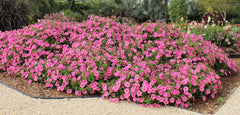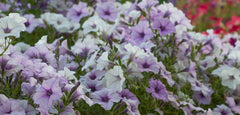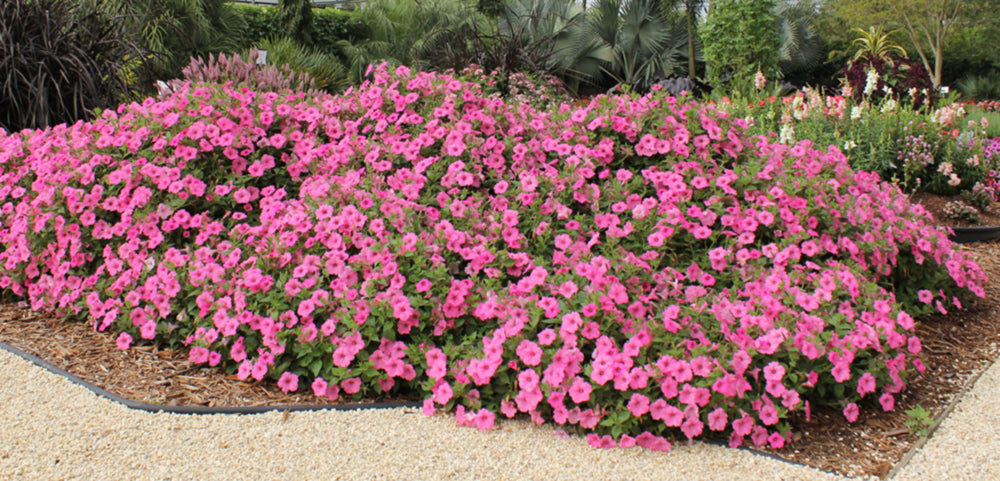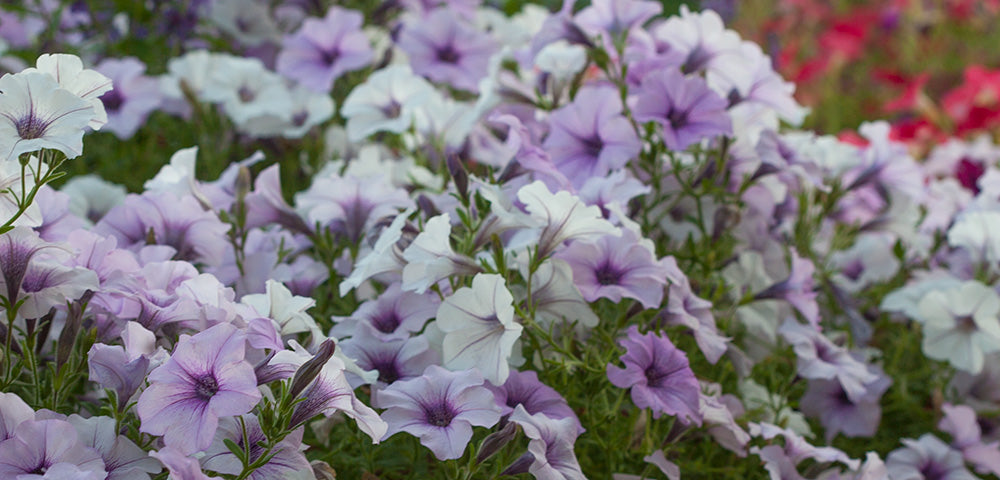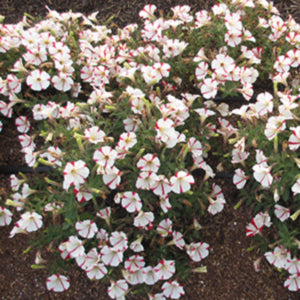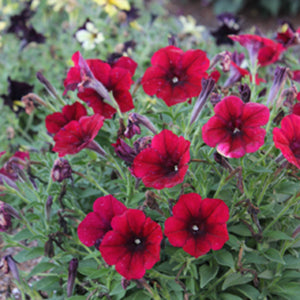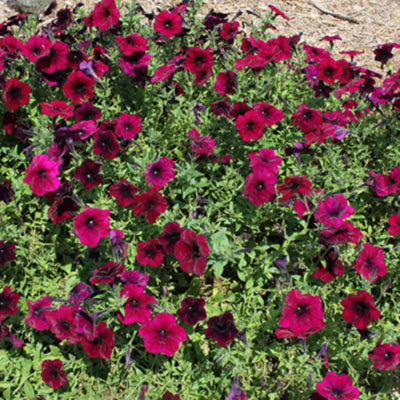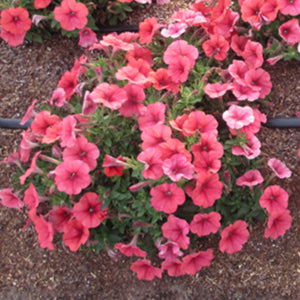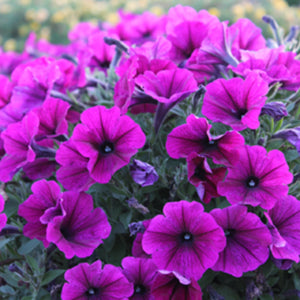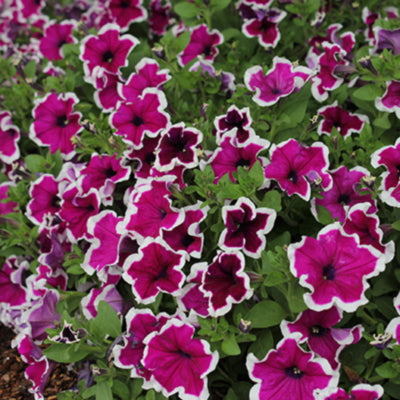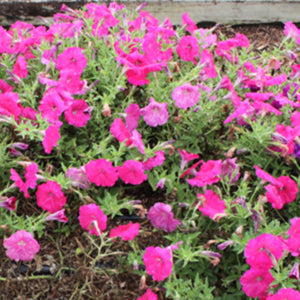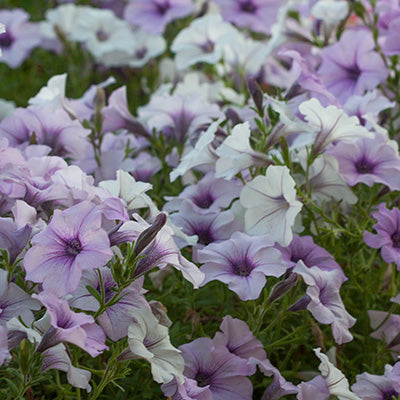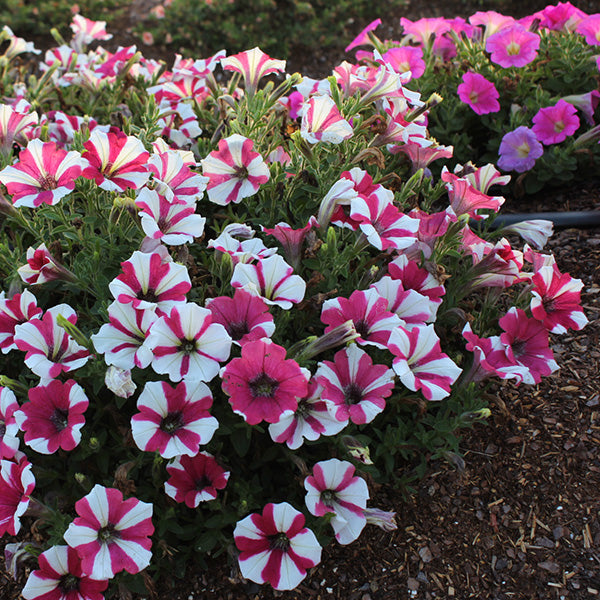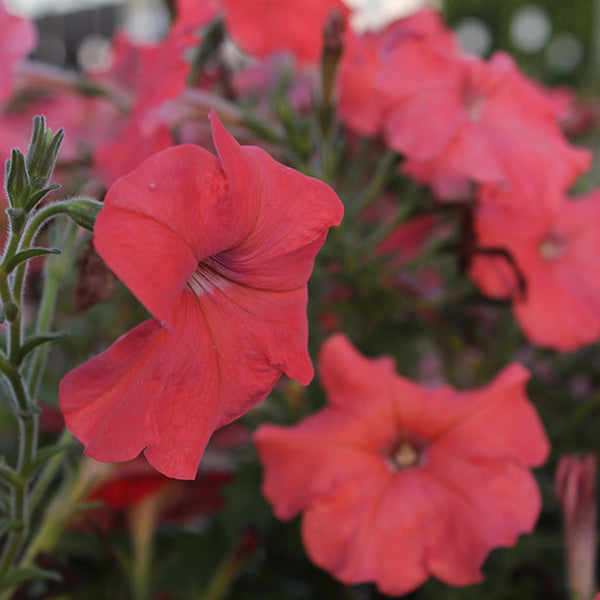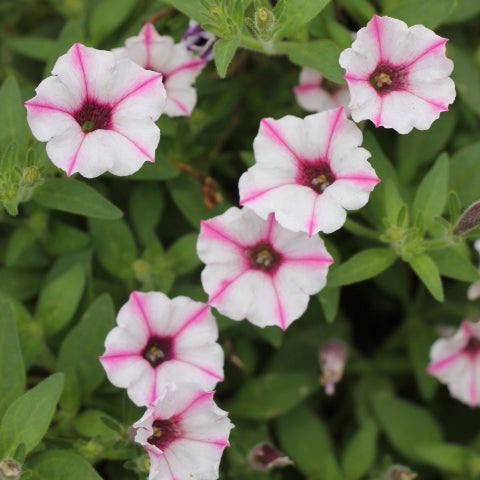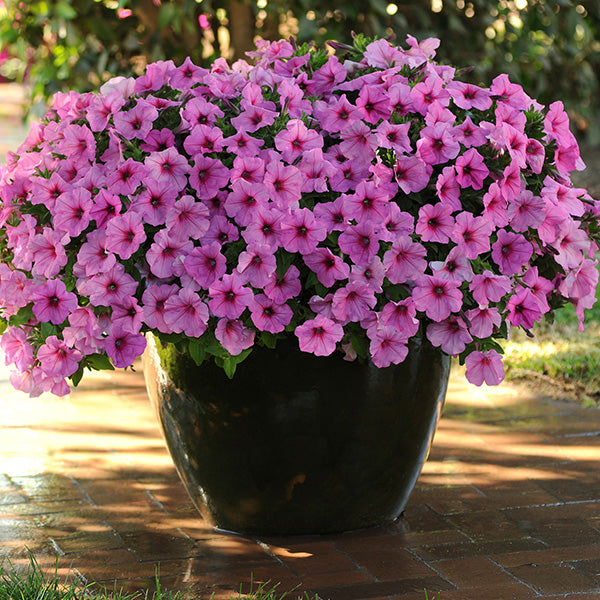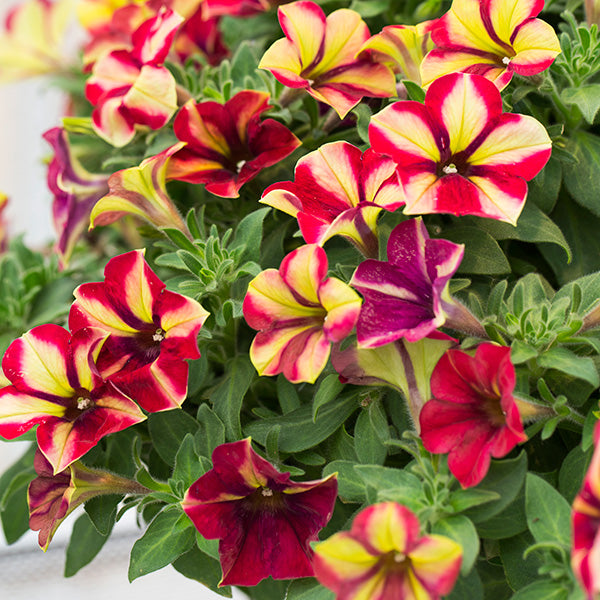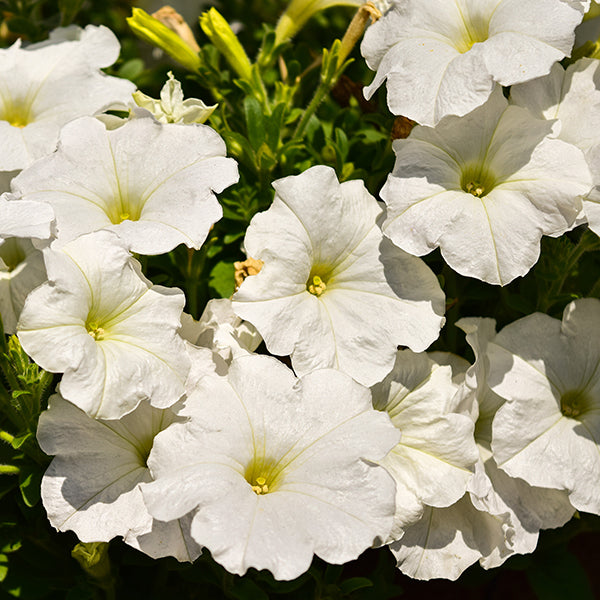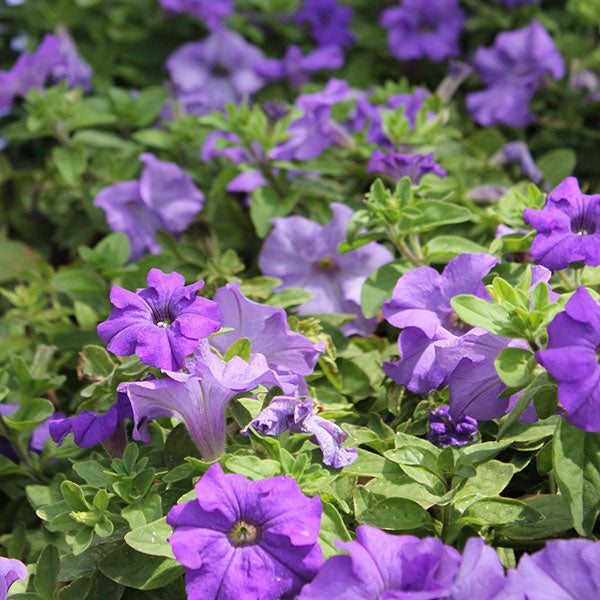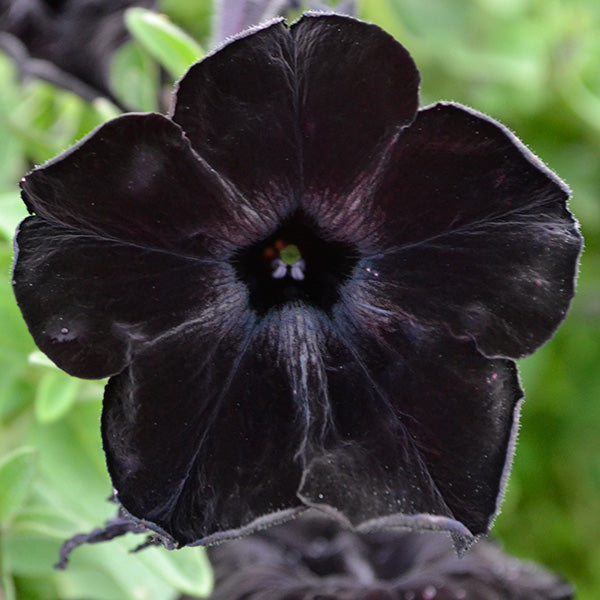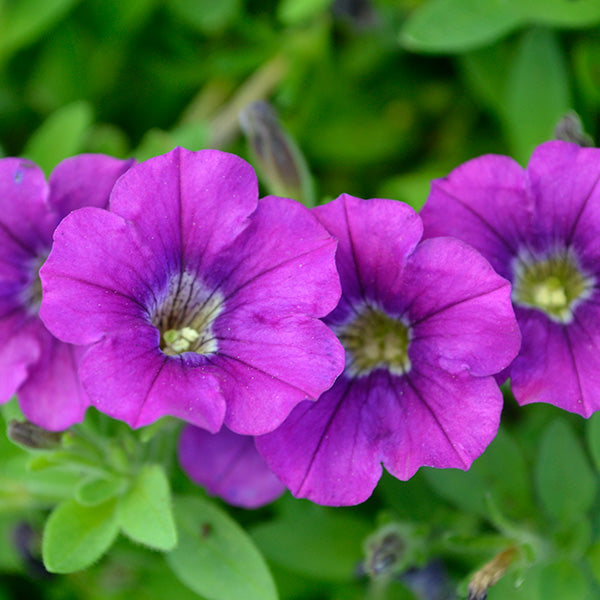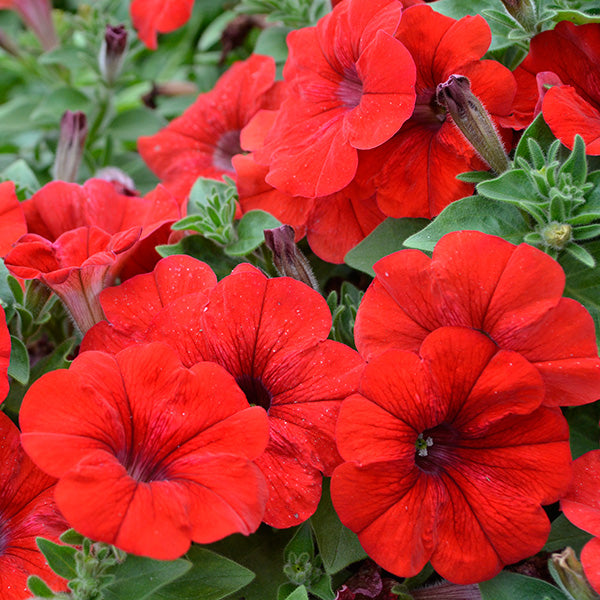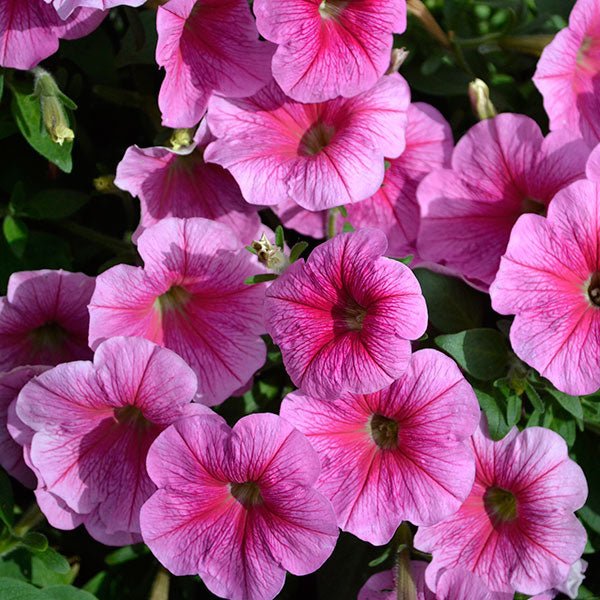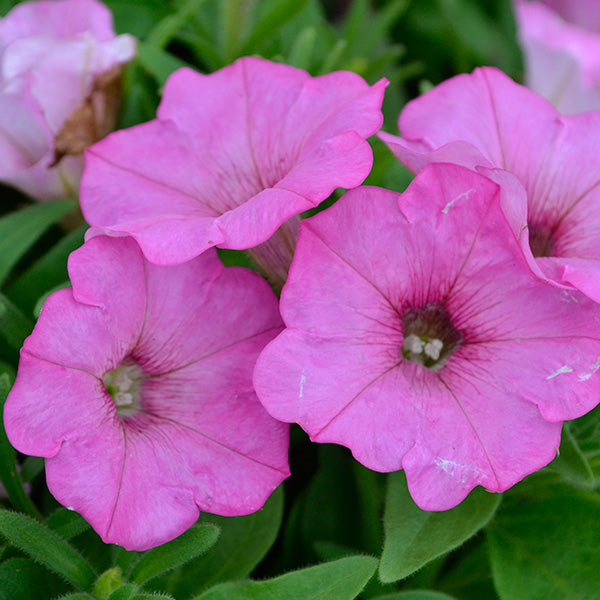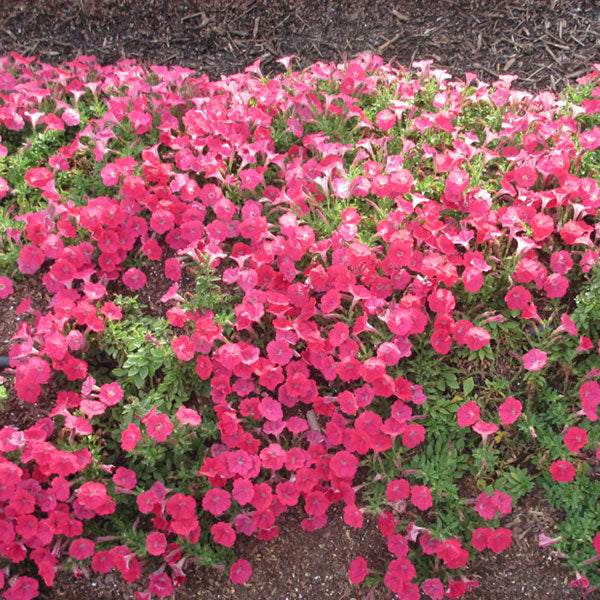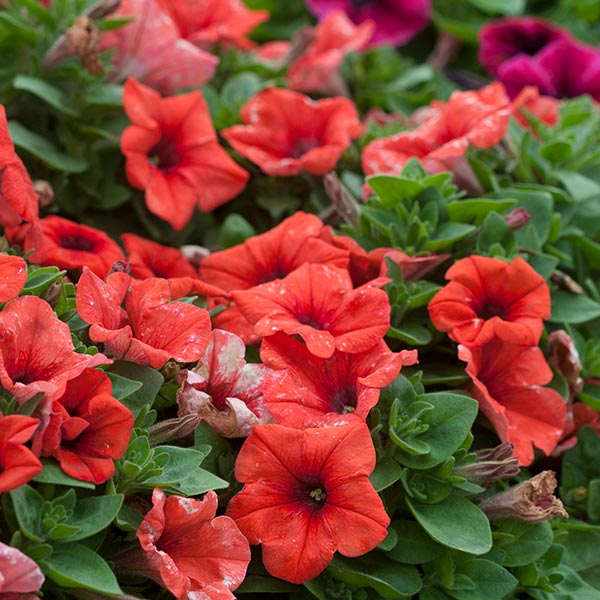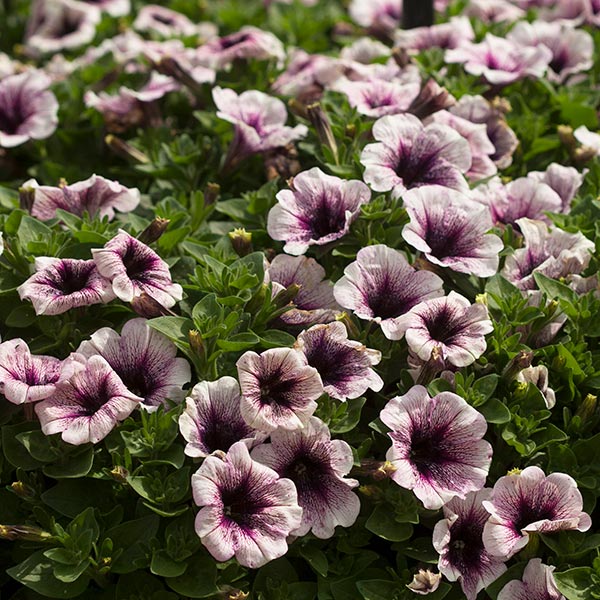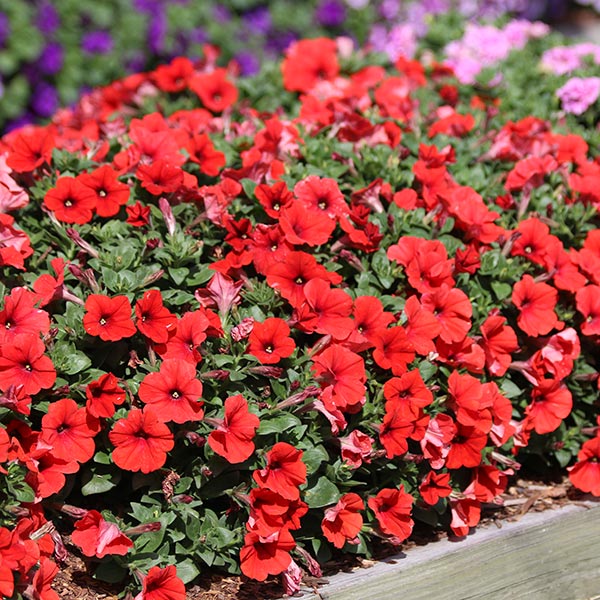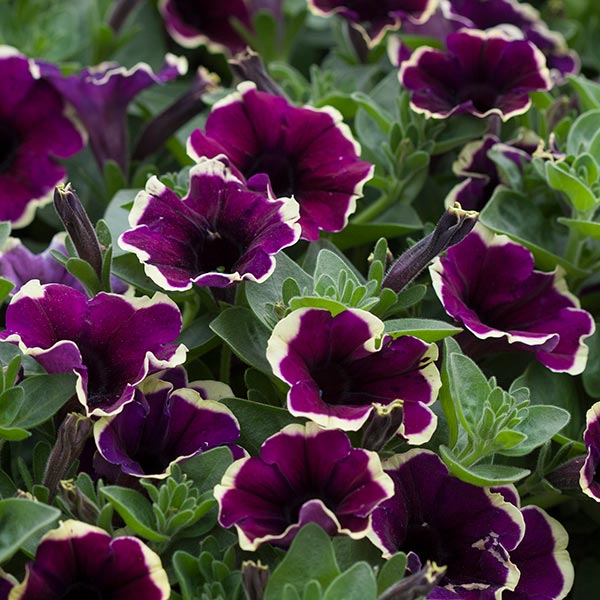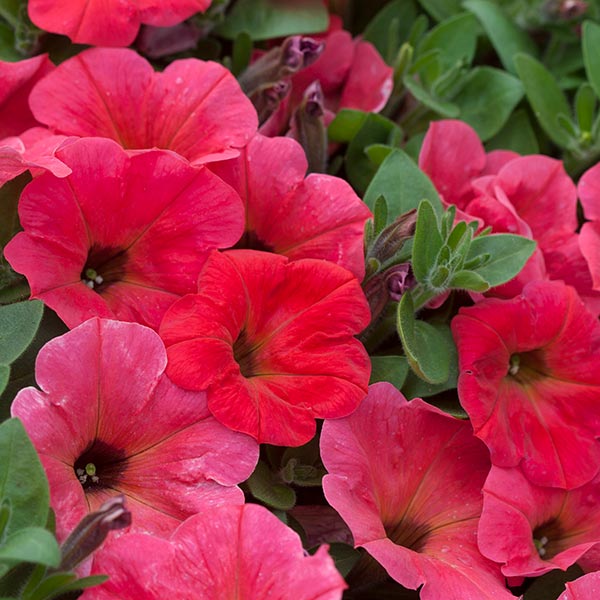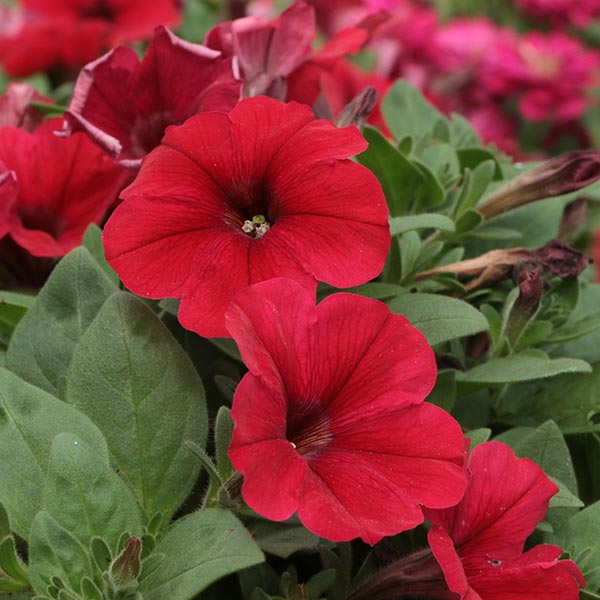Petunia (Petunia)
Petunia Plant Features
Talk about variety! Petunias come in an almost unlimited assortment of colors, shapes, and sizes. From compact types with dime-sized blooms to trailing types that form massive 3-foot-tall mounds, there's a petunia to fit any garden situation. You can use petunias on their own in beds and borders or pack them into containers and baskets with other sun-loving bloomers. Trailing types can also be used as a colorful annual groundcover. In addition, many petunia varieties are delightfully fragrant. Hummingbirds and a plethora of pollinating insects will also flock to your garden to feast on the nectar-rich petunia blooms.Petunia Questions?
Email us. One of our flower gardening experts will get back to you.
Petunia Growing Instructions
Petunias thrive in an open spot that receives at least 6 to 8 hours of direct sun a day. The plants like a loose, rich, slightly moist soil. If you are growing petunias in containers, plant them in a commercial potting soil mix. To grow petunias directly in a bed or border, be sure to add plenty of organic matter at planting time. Petunias have a tendency to get leggy and bloom less heavily in late summer. To counter this, shear the plants back by one third to encourage new growth and then fertilize them to give them a second wind. Although petunias don't like frost, they can tolerate cool temperatures and in warmer regions are best planted in the fall or late winter when the weather is cool.Petunia is not recommended for human or animal consumption.
-
Water
Medium water needs
-
Light
Outside: Part sun
Outside: Sun
-
Colors
Blue
Pink
Purple
Red
White
-
Special Features
Attracts butterflies
Attracts hummingbirds
Fragrant flowers/foliage
Groundcover
Super-easy to grow
Complement your Petunia
AngeloniaMingle Angelonia with Petunia for a layered look of color.
Geranium, Annual
Geranium and Petunia are a classic combination.
Dusty Miller
The gray leaves of Dusty Miller provide a cool contrast to the hotter colors of some Petunia.
